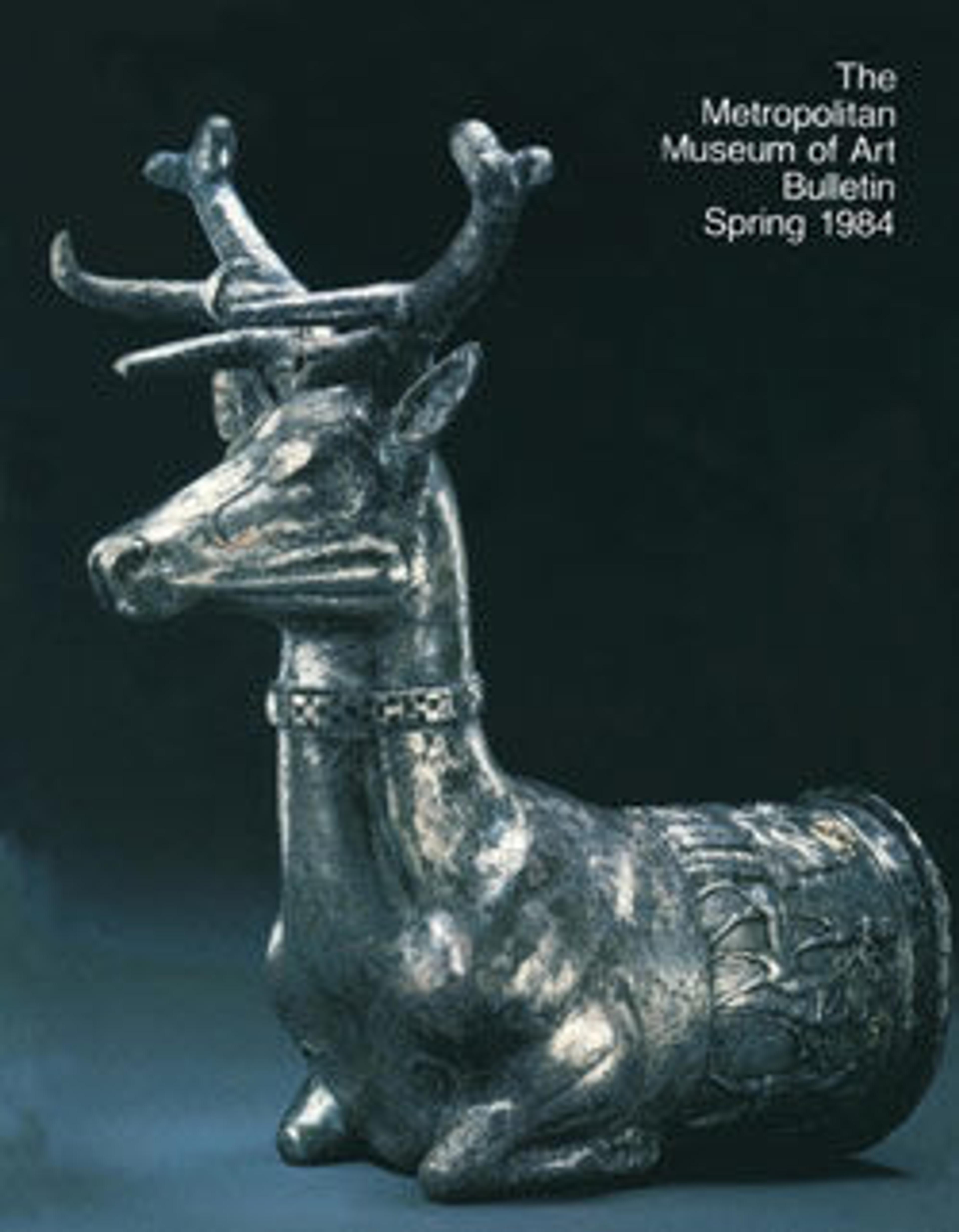Piriform jar
This piriform (meaning ‘pear-shaped’) ceramic jar has a small base and an elongated, narrow neck with a collar and a flaring rim. It is made of grey clay using a potter’s wheel, and decorated with several horizontal registers of hatching.
This vessel was excavated at Tureng Tepe in what is today northeastern Iran, near the modern city of Gorgan. During the Bronze Age Tureng Tepe was a large settlement, possibly even with a mudbrick palace at the center of town. In this period the dead were buried under the floors of houses, indicating perhaps a belief that they continued to play an important role in family affairs. Pottery vessels such as this one were placed in these graves. The shape of this vessel suggests that it was used as a decanter, but this cannot be proven and there is no indication of what sort of liquid was poured from it. It also unclear whether these vessels were used on a daily basis or specifically for funerary rites, as most of the pottery recovered at the site was found in graves.
The disappearance of this type of burnished grey pottery from the Gorgan Plain around 2000 B.C. has given rise to theories that the inhabitants of Tureng Tepe migrated into western Iran, settling at many of the well-known Iron Age sites there, such as Sialk and Hasanlu. But later pottery from Tureng Tepe has many of the same shapes and features as this burnished grey pottery, and it is just as likely that ceramic tastes and technologies simply changed.
This vessel was excavated at Tureng Tepe in what is today northeastern Iran, near the modern city of Gorgan. During the Bronze Age Tureng Tepe was a large settlement, possibly even with a mudbrick palace at the center of town. In this period the dead were buried under the floors of houses, indicating perhaps a belief that they continued to play an important role in family affairs. Pottery vessels such as this one were placed in these graves. The shape of this vessel suggests that it was used as a decanter, but this cannot be proven and there is no indication of what sort of liquid was poured from it. It also unclear whether these vessels were used on a daily basis or specifically for funerary rites, as most of the pottery recovered at the site was found in graves.
The disappearance of this type of burnished grey pottery from the Gorgan Plain around 2000 B.C. has given rise to theories that the inhabitants of Tureng Tepe migrated into western Iran, settling at many of the well-known Iron Age sites there, such as Sialk and Hasanlu. But later pottery from Tureng Tepe has many of the same shapes and features as this burnished grey pottery, and it is just as likely that ceramic tastes and technologies simply changed.
Artwork Details
- Title: Piriform jar
- Period: Middle Bronze Age
- Date: ca. 3000–2250 BCE
- Geography: Iran, Tureng Tepe
- Culture: Iran
- Medium: Ceramic
- Dimensions: 8.54 in. (21.69 cm)
- Credit Line: Rogers Fund, 1948
- Object Number: 48.98.24
- Curatorial Department: Ancient West Asian Art
More Artwork
Research Resources
The Met provides unparalleled resources for research and welcomes an international community of students and scholars. The Met's Open Access API is where creators and researchers can connect to the The Met collection. Open Access data and public domain images are available for unrestricted commercial and noncommercial use without permission or fee.
To request images under copyright and other restrictions, please use this Image Request form.
Feedback
We continue to research and examine historical and cultural context for objects in The Met collection. If you have comments or questions about this object record, please contact us using the form below. The Museum looks forward to receiving your comments.
